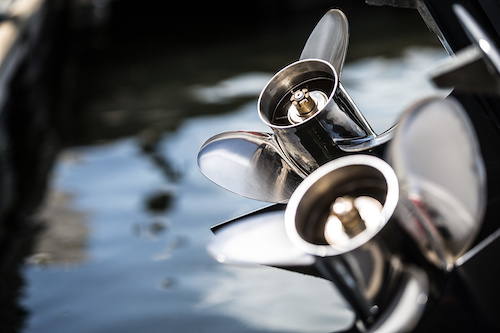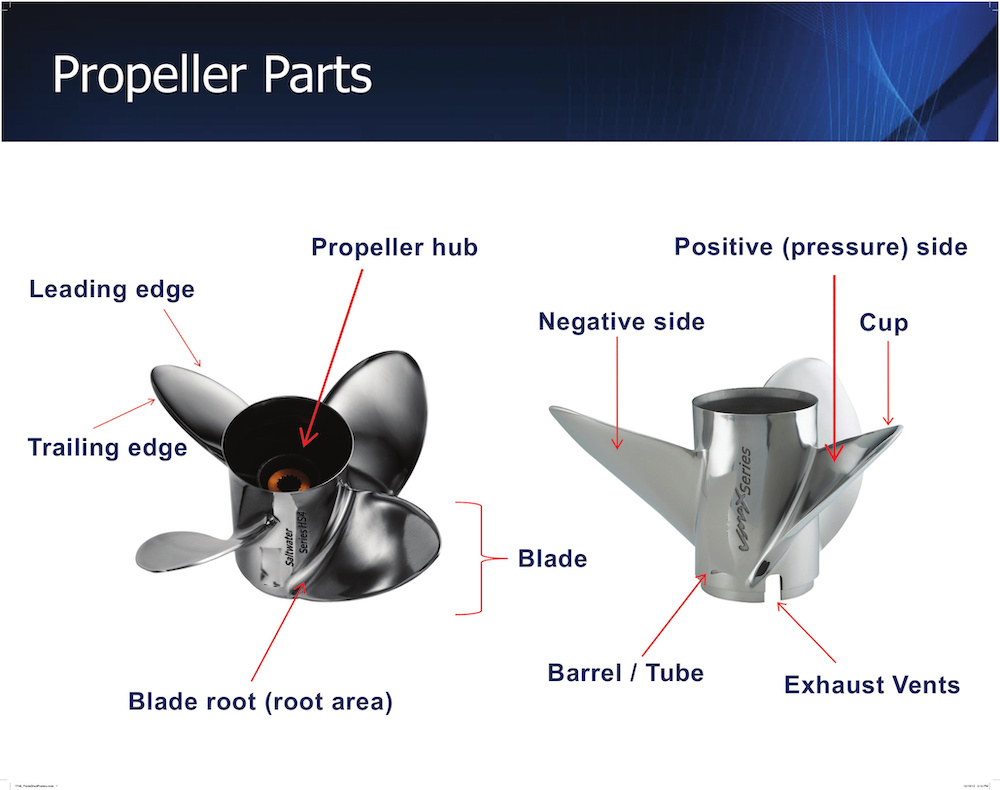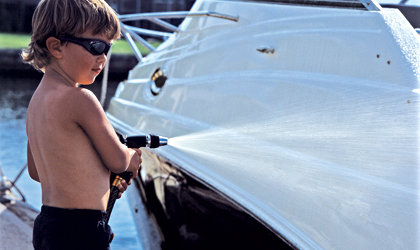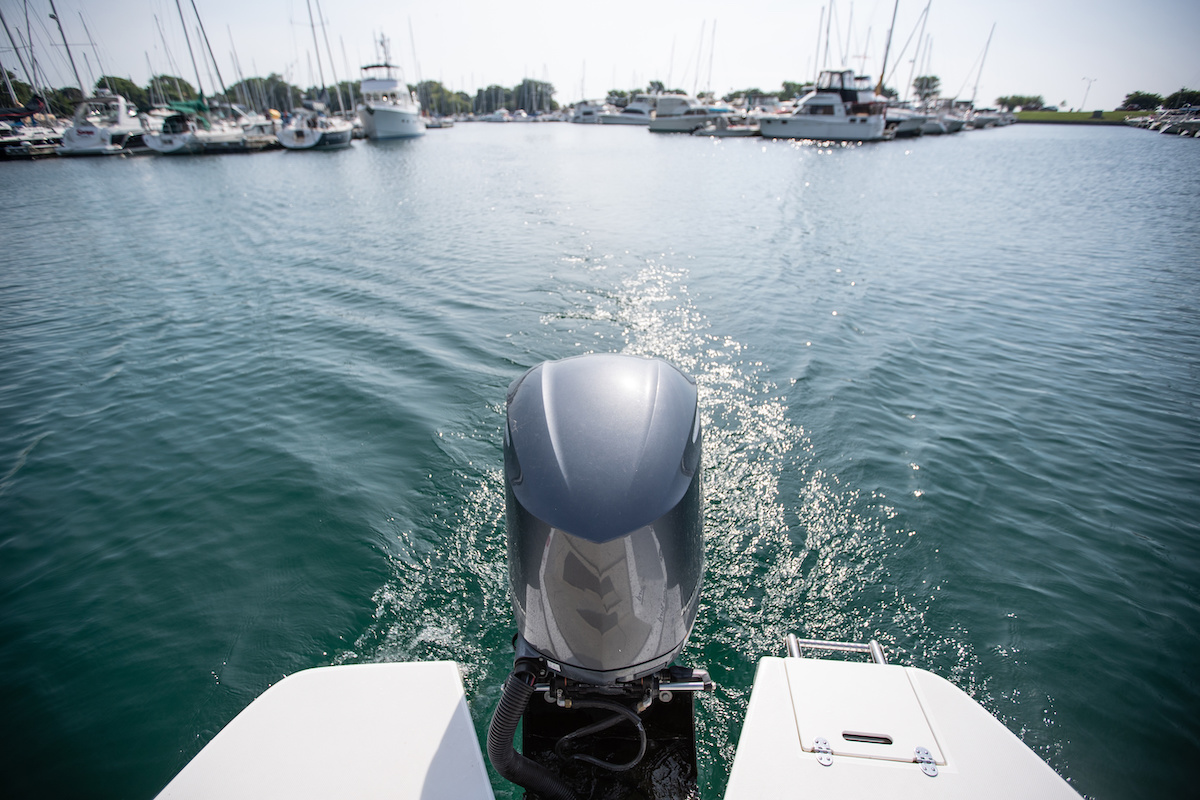Even if you own a boat, you might not know why propeller pitch matters or understand how it affects boat performance. In addition, when it comes time to replace your propeller, you'll need to consider the propeller pitch as part of your decision.
This post will explain how to calculate propeller pitch and why all boaters should understand this

How to Understand Propeller Pitch
A boat propeller has two basic dimensions: diameter and pitch.
These dimensions describe the propeller, usually in inches, and are always stated as diameter x pitch.
For example, a propeller described as 14.5 x 19 has a diameter of 14.5 inches and a pitch of 19 inches. These dimensions are often stamped or cast right on the propeller.
Recreational boat propellers are usually offered within a prop model line in two-inch pitch increments. Still, some high-performance props are offered in one-inch increments to allow for fine-tuning boat performance.
How to Calculate Propeller Pitch
Now that you understand how propeller pitch works, the next step is calculating your boat's propeller pitch.
Propeller diameter is simply the diameter of a circle scribed by the blade tips of the propeller.
Propeller pitch is the distance the propeller would move forward in one rotation if it were moving through a soft solid—think of a screw being turned into wood. The blades on a propeller are analogous to the threads on a screw. Some propellers have a constant pitch, meaning the pitch is the same at all points from the leading edge to the trailing edge of the propeller blades.
Progressive pitch starts lower at the leading edge and increases to the trailing edge. The pitch number assigned to a progressive-pitch prop is the average across the entire blade. Progressive pitch improves performance in high-speed applications.
Propeller pitch determines the final gear ratio between the engine and the water. A boat should be "propped" to operate within its wide-open throttle (WOT), which can be found in the motor specifications or the owner's manual.
Read Next: Boat Propellers: Repairs & Replacements
Ideally, a motor with a WOT range of 5000-5800 RPM (as noted on the boat tachometer) will reach 5400 rpm with the boat running wide open and trimmed out for optimal performance, with a full load of fuel and water and an average passenger load. That RPM may go up with a light load of fuel or passengers and lower with a heavier load—by propping for the middle of the range, there is leeway in either direction.
If the propeller pitch is too low (lower in inches), the engine can run over the desired WOT RPM, leading to engine damage or the engine protecting itself with a rev limiter.
If the prop pitch is too high (higher in inches), the motor may run below the WOT range—called "lugging the engine"—which can also put undue stress on the engine and gearcase components. Moving up or down two inches in pitch will usually change WOT engine speed by approximately 400 RPM.

A lower-pitch prop is like low gear in a car or a bicycle—you'll accelerate quickly, but top speed will suffer. A prop with too much pitch may deliver more top speed because the prop moves further forward with each rotation, but acceleration may be poor, and the boat will struggle to get on plane.
The best bet is a compromise between these extremes, a prop size that puts the engine in the sweet spot of its RPM range for everyday use.
Conclusion
When selecting a boat propeller, you should go for a higher pitch if you care about boat speed. However, a lower pitch will be the better choice if you load your boat with a significant amount of gear.
You Might Also Like:
- Basic Boat Maintenance Guide
- Outboard Engine Care
- How to Winterize a Boat
- Boat Repair: Choosing a Marine Mechanic
Editor’s Note: This article was updated in November 2022.


